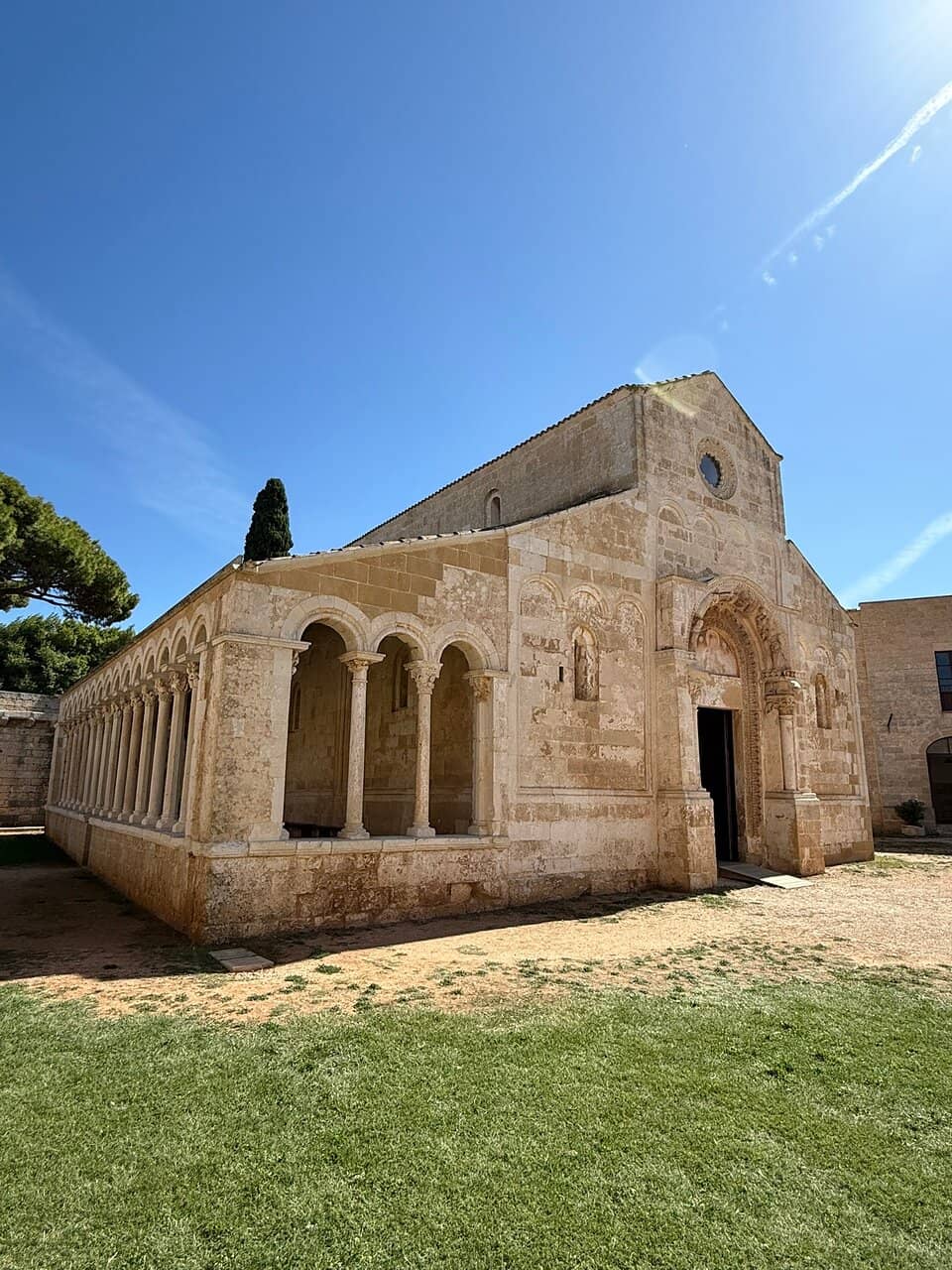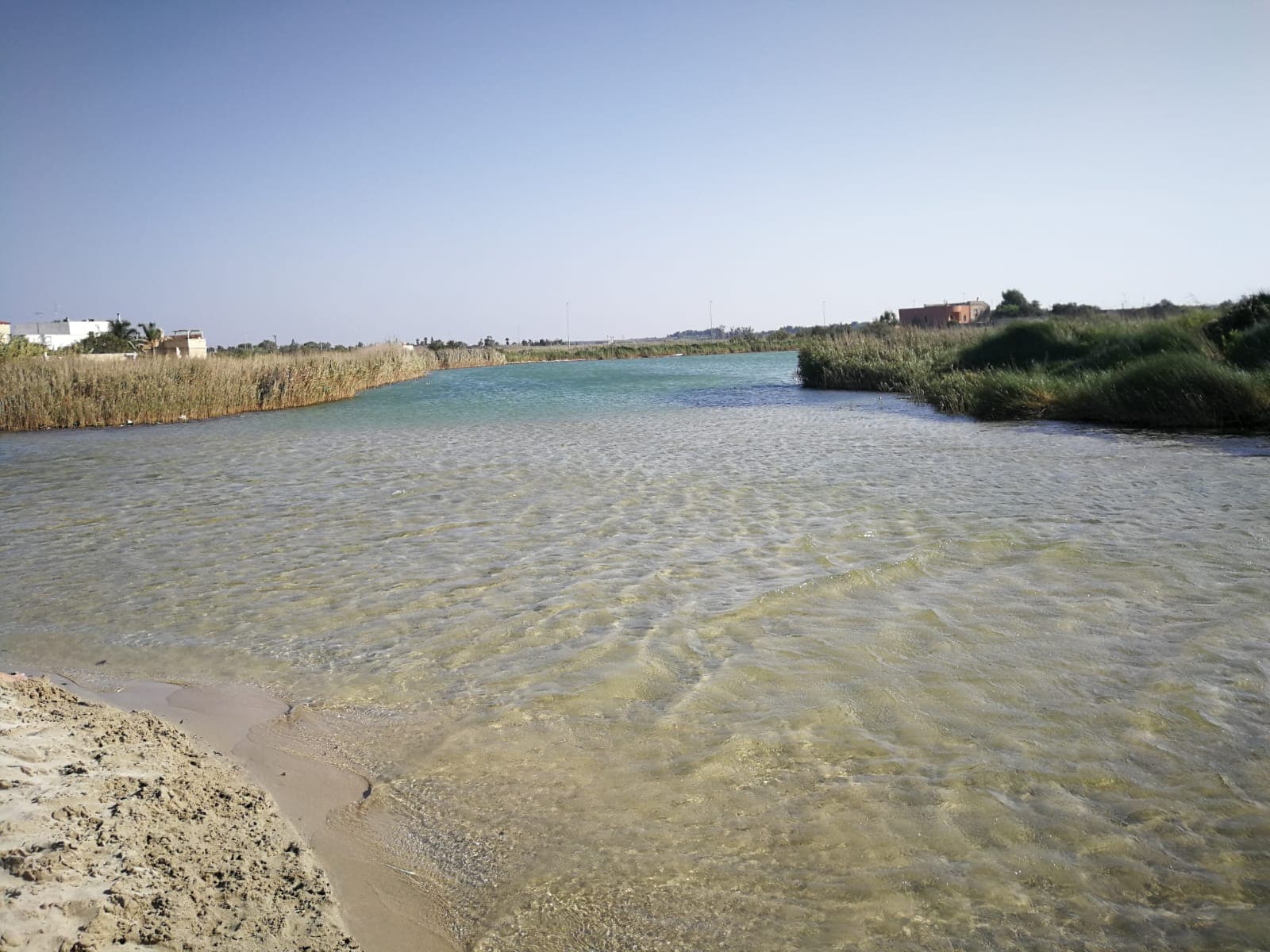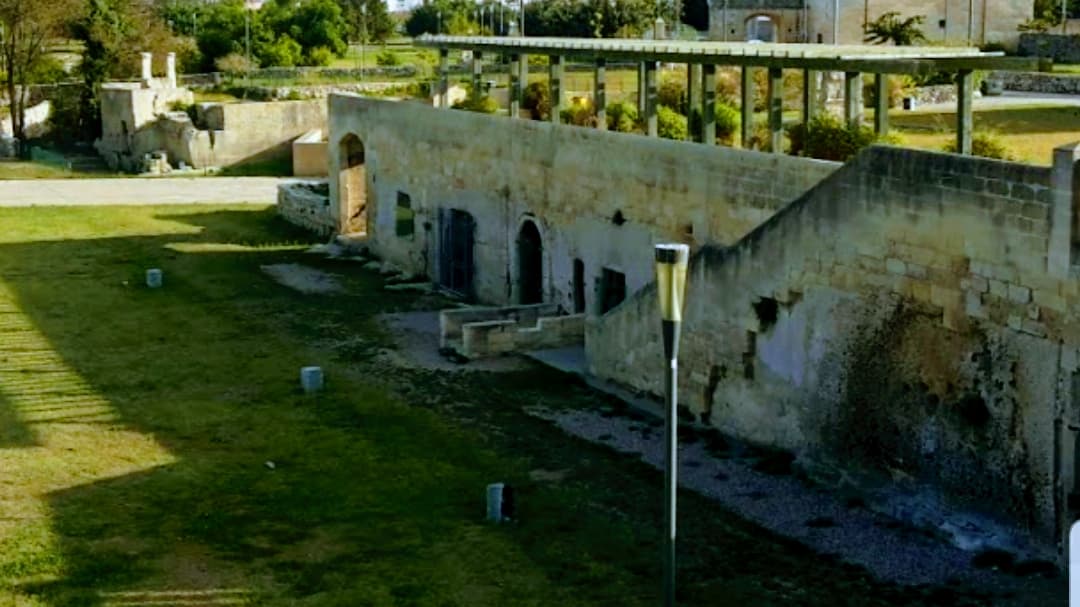
Abbazia di Santa Maria di Cerrate
A stunning Romanesque abbey with Byzantine frescoes, once a monastery and agricultural center, beautifully restored by the FAI.

Highlights
Must-see attractions

Social
From TikTok & Reddit
Best Time
Fewer crowds, peaceful atmosphere

Abbazia di Santa Maria di Cerrate
Best Time
Fewer crowds, peaceful atmosphere

Highlights
Must-see attractions
A stunning Romanesque abbey with Byzantine frescoes, once a monastery and agricultural center, beautifully restored by the FAI.
"Hidden gem of Puglia! Former greek convent with wonderful column capitals outside church and interesting frescoes inside it."

👗 Dress Code for Church
No shorts or bare shoulders in the church. Be respectful of this sacred site.
🚶♀️ Walk from Squinzano
It's about a 7km walk from Squinzano station if you enjoy a scenic hike.

Highlights
Discover the most iconic attractions and experiences

Romanesque Church & Frescoes
Main Church
Marvel at the stunning Puglian Romanesque architecture and ancient Byzantine frescoes, a testament to centuries of history.

Ancient Olive Press
Underground Excavation
Discover the fascinating history of olive oil production with an ongoing excavation of old olive presses.

Column Capitals
Exterior
Admire the intricate details of the column capitals outside the church, showcasing unique artistry.
Plans like a pro.
Thinks like you
Planning Your Visit
Respectful Attire is Key
Plan Your Visit with FAI
Best Times
Insider Tips
from TikTok, Instagram & Reddit
👗 Dress Code for Church
No shorts or bare shoulders in the church. Be respectful of this sacred site.
🚶♀️ Walk from Squinzano
It's about a 7km walk from Squinzano station if you enjoy a scenic hike.
🚗 Ample Free Parking
There's a large, free parking area under the trees nearby.
🖼️ Don't Touch Frescoes
Preserve the ancient art; avoid touching the frescoes.
Tips
from all over the internet
👗 Dress Code for Church
No shorts or bare shoulders in the church. Be respectful of this sacred site.
🚶♀️ Walk from Squinzano
It's about a 7km walk from Squinzano station if you enjoy a scenic hike.
🚗 Ample Free Parking
There's a large, free parking area under the trees nearby.
🖼️ Don't Touch Frescoes
Preserve the ancient art; avoid touching the frescoes.
🏛️ FAI Managed Gem
The FAI manages the site beautifully, ensuring a well-preserved experience.
What Travellers Say
Reviews Summary
Visitors praise the Abbazia di Santa Maria di Cerrate as a hidden gem, highlighting its beautiful Romanesque architecture, captivating frescoes, and the fascinating ancient olive press. The FAI's restoration efforts are commended for preserving this historical site, though some note the importance of adhering to the dress code for the church.
"Killing some time, we came across this small former monastery, now partially reconstructed and restored and quite lovely.
Modest entry cost with beautiful frescoes and buildings, plus an ongoing excavation of olive presses underground, made for a perfect short visit."
Stephen Kelley
"Hidden gem of Puglia! Former greek convent with wonderful column capitals outside church and interesting frescoes inside it. I do not know is it possible to come here by local transport, I have arrived here by my feet (7 km from Squizzano railway station)"
sibeaster
"I recommend this beautiful place to who is interested in holy art and Byzantine culture.
Thanks to FAI, many visitors can breathe the real atmosphere of that period.
Staff friendly and helpful, they should be aware to visitors that don’t respect the rules.
⬇️⬇️⬇️⬇️⬇️⬇️⬇️⬇️⬇️⬇️⬇️⬇️⬇️
I suggest to visit, especially the Abbey with right clothes: No shorts 🩳 or naked shoulders - it is a church and you must be respectful to this sacred place.
⛔️⛔️⛔️⛔️⛔️⛔️⛔️⛔️🛑🛑🛑🛑🛑🛑🛑🛑
And don’t touch the frescoes with your hands."
Enrico Morisco
What People Like
What People Dislike
Frequently Asked Questions
🚇 🗺️ Getting There
The abbey is located on SP100 between Squinzano and Casalabate. While some visitors have walked from Squinzano railway station (approx. 7 km), driving is more common. There is a large, free parking area available under the trees.
Information on direct public transport can be limited. It's advisable to check local bus schedules or consider a taxi service from nearby towns like Lecce or Squinzano if you don't have a car.
Yes, cycling is a great option, especially if you're staying in the surrounding areas. The roads are generally well-maintained, and the landscape is beautiful.
From Lecce, you can drive directly to the abbey, which is about a 20-30 minute journey depending on traffic. Alternatively, you could take a train to Squinzano and then arrange transport or walk.
While the main church and some outdoor areas are accessible, some parts like the underground olive press excavation might have limited accessibility. It's best to inquire with the FAI for specific details.
🎫 🎫 Tickets & Entry
Yes, a ticket is required for entry to the abbey. The FAI manages the site, and there's a modest entry fee that supports the preservation of this historical gem.
The abbey is generally open from morning to late afternoon, but hours can vary. It's recommended to check the official FAI website or their social media for the most current opening times, especially for specific days or events.
FAI members often receive free entry or discounts. It's worth checking the FAI website for membership benefits or any special offers that might be available.
Absolutely! The abbey is often featured during FAI Spring Days, offering special access and events. Be prepared for larger crowds during these popular weekends.
Photography is generally allowed for personal use, but it's important to be respectful, especially in the church. Avoid flash photography that could damage the frescoes.
🎫 🏛️ Onsite Experience
You can explore the Romanesque church with its beautiful Byzantine frescoes, the ancient olive press excavation, and admire the unique column capitals. The site offers a deep dive into history and art.
Originally a Byzantine monastery, it later became an agricultural center specializing in olive processing. It's a significant example of Otranto Romanesque architecture.
While not always explicitly advertised, FAI staff or volunteers are often present and can provide insights. Inquire upon arrival about any available information or informal explanations.
Visitors must dress respectfully. This means no shorts or bare shoulders. It's a church, and adherence to this rule is expected.
A visit can range from 1 to 2 hours, depending on your interest in the history, art, and the details of the olive press. It's a perfect stop for a short, enriching experience.
🍽️ 🍽️ Food & Dining
There are typically no dining facilities directly within the abbey itself. You'll need to visit nearby towns like Squinzano or Casalabate for restaurants and cafes.
Picnicking might be possible in designated outdoor areas, but it's best to confirm this with the FAI staff upon arrival. Remember to clean up after yourself.
The Salento region is known for its delicious cuisine, including orecchiette pasta, seafood, and local olive oil. Look for trattorias in nearby towns for authentic flavors.
Explore the towns of Squinzano and Casalabate for local restaurants and bars. Lecce, a larger city nearby, offers a wider array of dining options.
During special events like FAI Spring Days, there might be temporary food stalls or local vendors offering refreshments. It's best to check event details in advance.
📸 📸 Photography
The Romanesque church interior with its frescoes, the exterior architectural details, and the surrounding olive groves offer beautiful photographic opportunities.
Drone usage is typically restricted at historical and cultural sites to protect the heritage and ensure visitor safety. It's best to assume it's not permitted unless explicitly stated otherwise by the FAI.
Early morning or late afternoon light can be ideal for capturing the abbey's beauty, offering softer light and fewer crowds.
While personal photography is usually allowed, avoid using flash to protect the delicate frescoes. Be mindful of other visitors and the sacred nature of the space.
Yes, the olive press area is a unique historical feature and a great spot for photos. Ensure you follow any safety guidelines provided.
For Different Travelers
Tailored advice for your travel style
👨👩👧 Families with Kids
While there aren't specific play areas, the historical context and visual elements like frescoes can spark curiosity. Consider bringing a small sketchbook for children to draw what they see, making the visit more interactive. It's a great opportunity to introduce them to historical sites in a respectful manner.
🏛️ History & Art Enthusiasts
Explore the layers of history, from its origins as a Byzantine monastery to its later role as an agricultural hub. The ongoing excavation of the olive press adds another dimension to understanding the site's economic and social significance. The FAI's meticulous restoration ensures an authentic and informative experience.
🚶♀️ Solo Travelers & Hikers
Deep Dives
In-depth insights and expert knowledge
A Journey Through Time: The Abbey's History
Historically, its foundation is placed between the late 11th and early 12th centuries. Legend, however, attributes its founding to King Tancredi d'Altavilla, Count of Lecce, who, after chasing a doe into a cave, reportedly had a vision of the Madonna. This blend of historical fact and local legend adds to the abbey's mystique.
Today, thanks to the restoration efforts by the FAI (Fondo Ambiente Italiano), visitors can experience this dual nature of the abbey – a place of worship and a historic rural estate. The restoration has brought to light significant Byzantine frescoes and highlighted the architectural beauty of Puglian Romanesque style, making it a crucial site for understanding the region's cultural heritage.
Architectural Marvels and Artistic Treasures
Inside, the abbey holds a treasure trove of Byzantine frescoes. These ancient artworks, though partially restored, offer a glimpse into the religious and artistic practices of centuries past. The restoration process has allowed for a deeper appreciation and understanding of these delicate murals.
The site also includes the fascinating remains of an ancient olive press, providing insight into the agricultural economy that once thrived here. This excavation offers a tangible connection to the daily life and industry of the abbey's past inhabitants.
Visiting the Abbey: Practical Insights
The abbey is managed by the FAI, and while there's a modest entry fee, it contributes to the preservation of this historical gem. Ample free parking is available nearby, making it convenient for those arriving by car.
For those interested in history and art, the abbey offers a rewarding experience. You can explore the church, admire the frescoes, and learn about the ancient olive oil production. It's a perfect stop for a few hours, offering a deep dive into the Salento region's past.






Social
from TikTok, Instagram & Reddit